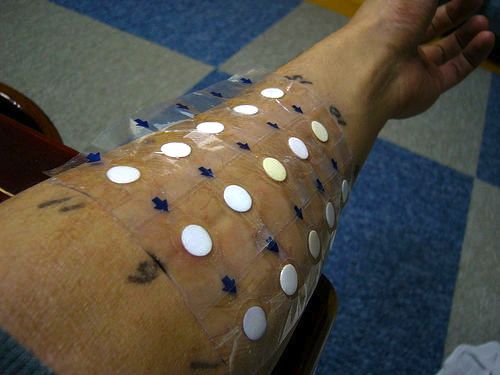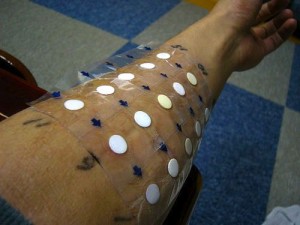
 Skin allergies, like so many other types of allergies, are on the rise. The most common include eczema, hives, and allergic contact dermatitis. These can all result in rashes; red, scaly or itchy skin; swelling; dry, flaky skin; and inflamed or blistered skin.
Skin allergies, like so many other types of allergies, are on the rise. The most common include eczema, hives, and allergic contact dermatitis. These can all result in rashes; red, scaly or itchy skin; swelling; dry, flaky skin; and inflamed or blistered skin.
According to the American Academy of Allergy, Asthma, & Immunology, as many as 15–24 percent of Americans will experience hives at some point in their lives, while allergic dermatitis affects between 10–20 percent of children and 1–3 percent of adults.
1 What causes these allergic reactions? Often it’s hard to nail down exactly what any one person may be allergic to, as the possible culprits are many. But there are a few that seem to be common irritants-including those listed below:
1. Latex. Found in rubber gloves and balloons, this is a common skin allergen that may cause dermatitis or even life-threatening anaphylaxis.
2. Dyes. These are the chemical colorants added to personal care products, which may commonly cause skin irritation.
3. Fragrances. Synthetic fragrances found in most personal care products, perfumes, and colognes are common skin irritants.
4. Preservatives. Chemicals used to prevent contamination in products are a common cause of allergic contact dermatitis. These include parabens, methylchloroisothiazolinone, and methylisothiazolinone.
5. Lanolin. Once a popular moisturizer, lanolin is processed in a number of ways, and some of these processing methods involve other chemicals and by-products that can irritate sensitive skin.
6. Chemicals that release formaldehyde: These chemicals are added to products for other reasons, such as to moisturize or keep the product at a certain consistency, but they may release formaldehyde and cause allergic reactions. Examples include quaternium 15, MDM hydantoin, DMDM hydantoin, and ureas.
This list only skims the surface. People with sensitive skin may also be allergic to dairy, gluten, PABA, alcohols, and nut ingredients, among others. The important thing is if you have a skin condition, particularly any of those listed above, an allergy is probably to blame. If you can pinpoint those items you’re allergic to, you may be able to reduce your flare-ups and enjoy more comfortable, attractive skin.
Your first step should be to contact your allergy doctor (or dermatologist) and ask for what is called a “patch test.” This is a common test used to identify substances that may create an allergic reaction for you. You can help your doctor by telling him/her of any substances you came into contact with before experiencing the reaction. He/she will then determine which substances you should be tested for, and place these in direct contact with your skin, usually on the upper back or on the forearm. After 48 hours the doctor will remove the patches and take an initial reading of any reactions, and then take another reading again 48 hours later. If your skin becomes red, swollen, or blistered as a result of contact with any of the substances, your doctor may conclude that you are allergic to that substance.
Once you have the results of your tests, you will probably have better luck avoiding the items that caused problems for you-and enjoy more comfortable, healthy skin in the future!
Have you had a patch test on your skin? Please share your story and suggestions.
Sources
- Diseases 101: Skin Allergies. American Academy of Allergy, Asthma, & Immunology. http://www.aaaai.org/patients/gallery/skinallergies.asp.
Photo courtesy tkym via Flickr.com.

